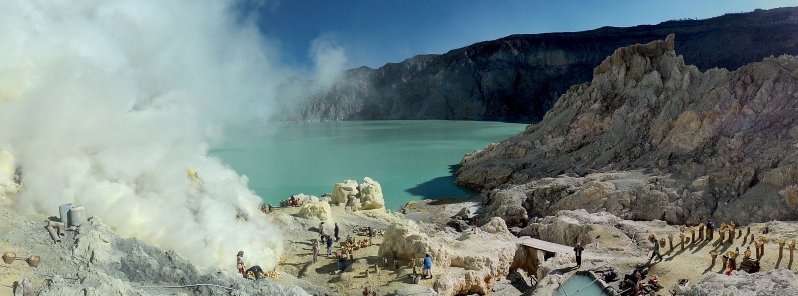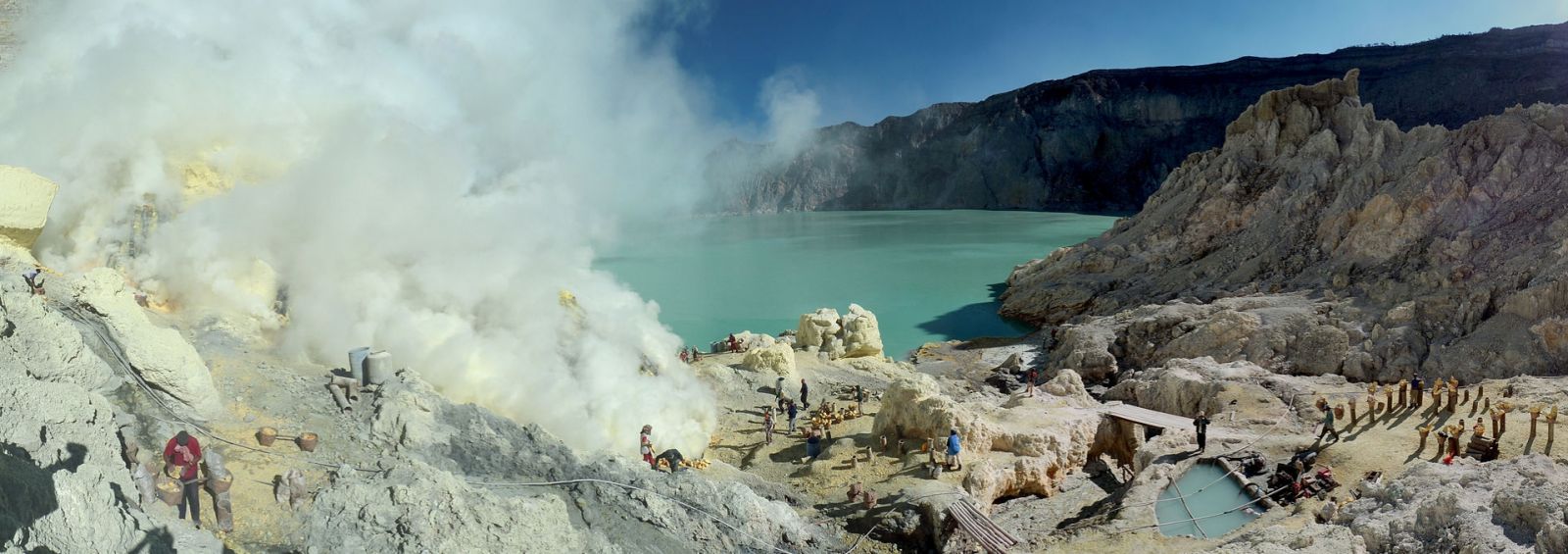Earthquake at Ijen volcano triggers a 3-meter tsunami, killing 1, Indonesia

Volcanic tremor at Mount Ijen in East Java, Indonesia, triggered the release of poisonous gas and a 3 m (10 feet) high tsunami at 05:30 UTC (12:30 LT) on Friday, May 29, 2020. A sulfur miner was found dead a day after, local media confirmed.
The tremor resulted in toxic air and isolated wave from the lake in the crater, which was considered a tsunami, according to Indonesian tsunami expert Widjo Kongko. A tsunami usually happens when activities at the bottom of an ocean or lake disturbed a column of water at the surface.
“[A tsunami] may be triggered by an earthquake, landslide, or volcanic activity. The phenomenon recorded in the lake within Mount Ijen’s crater is an example of a tsunami,” Widjo said Monday, June 1.
He further explained that the wave was known as a seiche among experts. “Water oscillations or waves caused by tremors fall into the seiche category.”
The victim was said to be working with another miner when the incident occurred. The latter managed to run and survive, while the former disappeared and was eventually found dead on Saturday.



Widjo urged the East Java Disaster Mitigation Agency (BPBD) to conduct an investigation into volcanic activities in the region and develop mitigation plans, such as setting up early warning systems, to avoid further losses and damage in the event of a seiche.
“The development of a tourist destination around any lake must be done in accordance with disaster mitigation principles,” he noted.
Geological summary
The Ijen volcano complex at the eastern end of Java consists of a group of small stratovolcanoes constructed within the large 20-km-wide (12.4 miles) Ijen (Kendeng) caldera.
The north caldera wall forms a prominent arcuate ridge, but elsewhere the caldera rim is buried by post-caldera volcanoes, including Gunung Merapi, which forms the high point of the complex. Immediately west of the Gunung Merapi stratovolcano is the historically active Kawah Ijen crater, which contains a nearly 1-km-wide (0.62 miles), turquoise-colored, acid lake.
Picturesque Kawah Ijen is the world’s largest highly acidic lake and is the site of a labor-intensive sulfur mining operation in which sulfur-laden baskets are hand-carried from the crater floor. Many other post-caldera cones and craters are located within the caldera or along its rim.
The largest concentration of cones forms an E-W zone across the southern side of the caldera. Coffee plantations cover much of the caldera floor, and tourists are drawn to its waterfalls, hot springs, and volcanic scenery.
Featured image credit: Wikimedia

Commenting rules and guidelines
We value the thoughts and opinions of our readers and welcome healthy discussions on our website. In order to maintain a respectful and positive community, we ask that all commenters follow these rules.